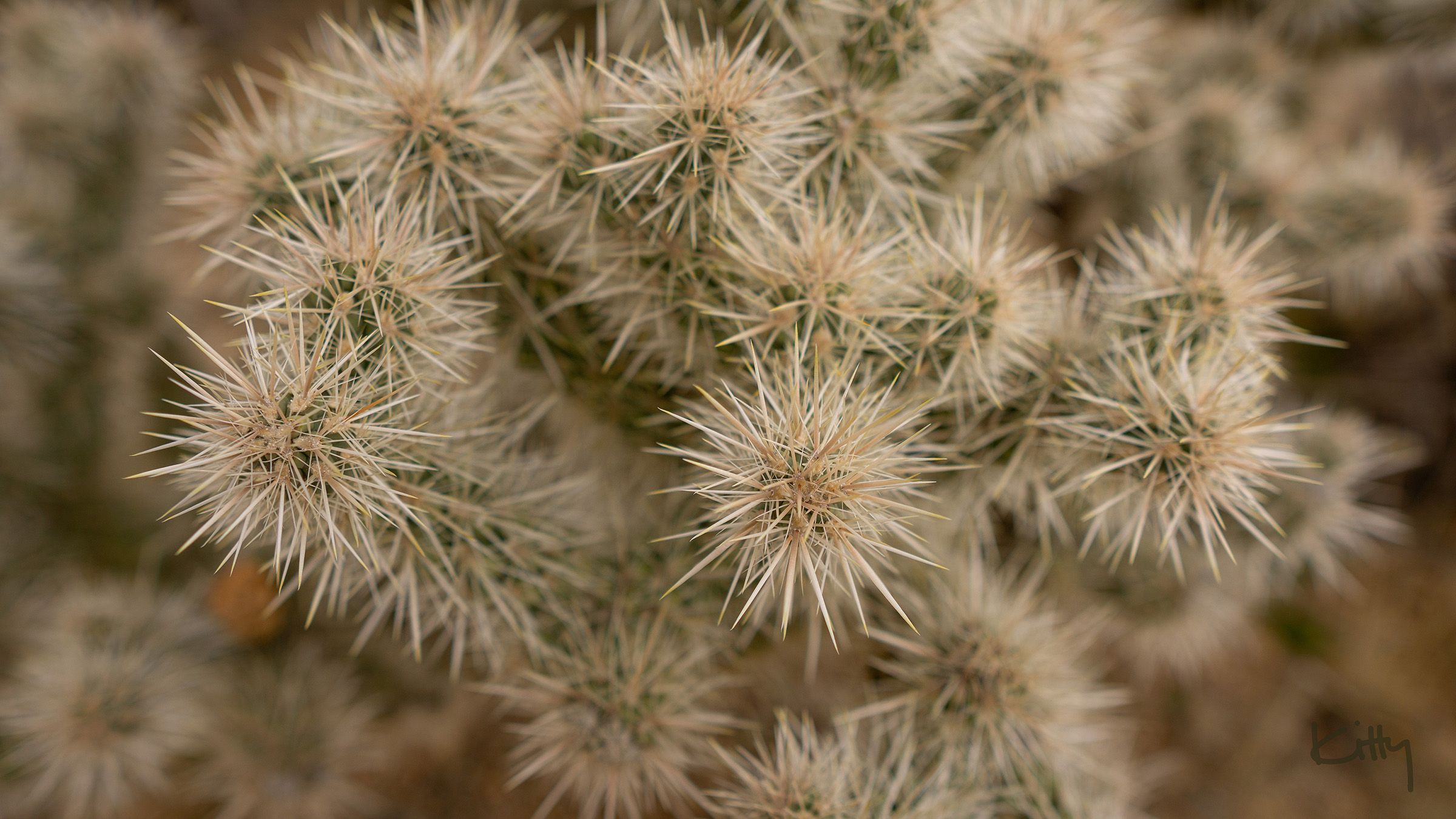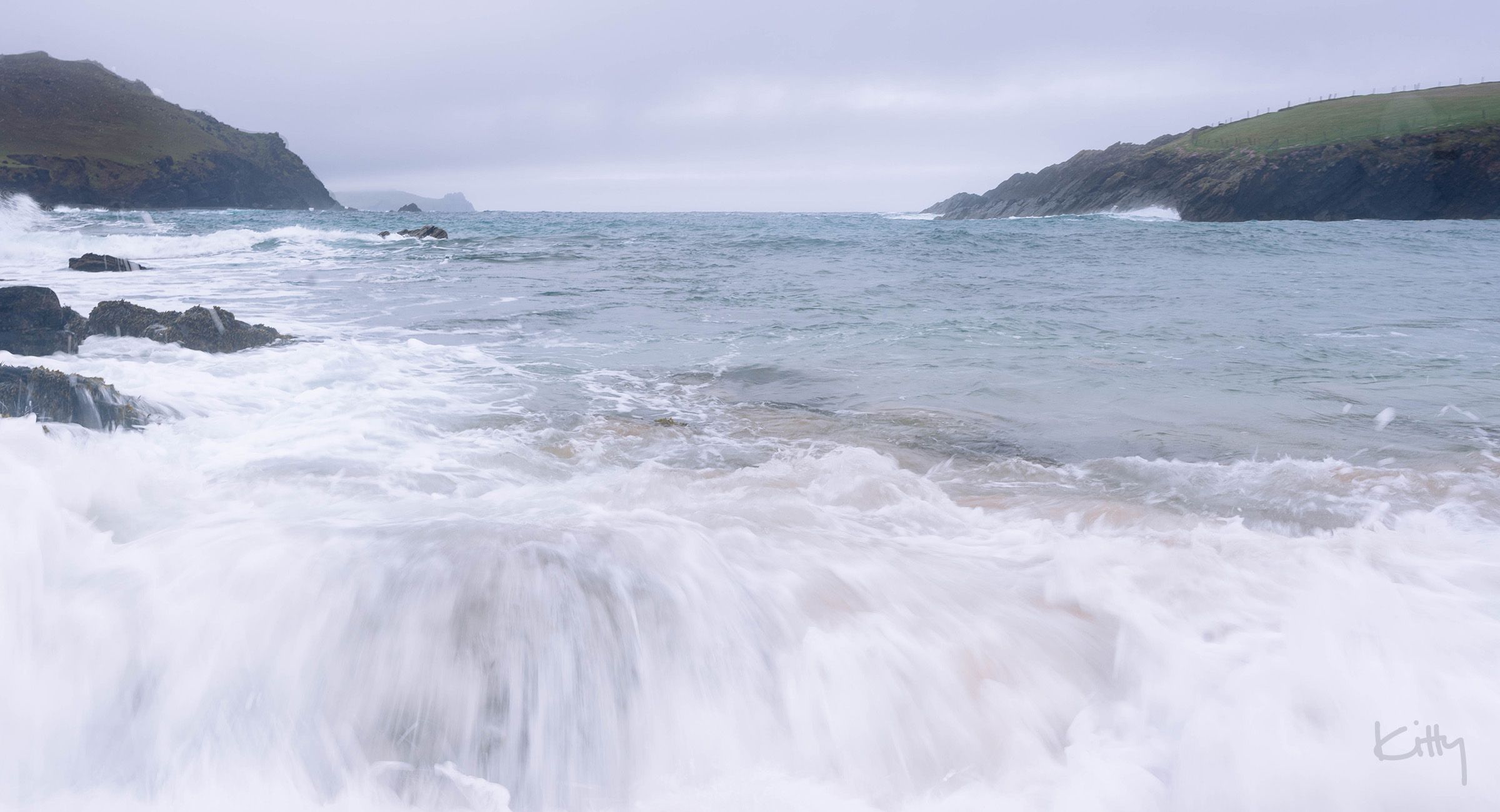Photo: Cholla Cactus at Joshua Tree National Park, California | © Kitty Singsuwan
Does it take you a while to decide on new, or new-to-you, camera gear?
It takes me forever. From a $100 ball head to a $2500 camera body, every photography gear-related decision is a big decision. I don’t like to return. I keep gadgets until they break… So yeah, I take my time.
When it was time to buy a full frame camera body, I really took my time. I researched and ran through the usual (price, build quality, auto-focus), along with a few other things:
- Comfort + form factor
My first ever camera was, and still is, a Sony crop sensor. What finally drove me to get it, after three years of research, was its form factor. Specifically, the way it felt in my hands. That’s it.
I was torn between Canon, Nikon & Sony for a long time, researched the heck out of every spec and couldn’t make up my damn mind. One day, I finally walked into a Best Buy, saw all the Canon & Nikon bodies, and knew they’d be too big for me to grip. Then I picked up a Sony crop sensor, which felt oh so right.
Can you believe after all that research? Funny how some final decisions happen. - Megapixels + file management
I met someone who owned 2 Sony A7S III camera bodies, not because they’re fantastic in low light (which they are), but because of their low megapixel count of 12.2. She didn’t want to deal with large RAW files.
That threw me for a loop. At the time, I thought everyone wanted more megapixels. The more the better… too much will never enough… Then I tried a 33 megapixel Sony A7 IV.
33 megapixels doesn’t sound like much next to Sony’s 60 megapixel A7R V, or Fuji’s 100 megapixel medium format. But the file size of a 33 megapixel uncompressed RAW is nearly three times the size of an APS-C uncompressed RAW.
I felt it when I ran out of space on my SD cards (sooner than expected), transferred the images from my cards, then performed a backup in the middle of the night. That’s when I realized, while I wanted more megapixels, I didn’t want to fuss with so many. - Risk + growth
When it comes to buying gear, the pros say pour your money into glass (lenses), and less into camera bodies. It’s better to have an older camera body with a great lens, than the other way around.
On a workshop a few years ago, I met a pro photographer with a different point of view. He said, “Kitty, one day your crop sensor will no longer support your vision. You won’t be able to push its limits in ways you want. That’s when you should jump to full frame, but don’t just jump. Make the highest jump possible. You’ll appreciate the newer features as you grow.”
That struck a chord, because I knew he was right.
After that conversation, I was set to get the best money could buy, when another photographer encouraged me to spend less.
“Buying an expensive camera is nice, but you might baby it and play it safe. With a less expensive camera, there’s a good chance you’ll take more creative risks.”
Dang it. She was right, too.
It’s a lot to think about. But for me, it was worth the strain.
Which full frame did I finally get? As you guessed, it feels good in my hands, has enough megapixels but not too much, with features that’ll support my growth, at a price point that makes creative risk-taking a little easier. Check out my gear list to learn more.
Until next time,
K
Check out my gear list.
Subscribe to stay in touch.
Buy me a coffee.


